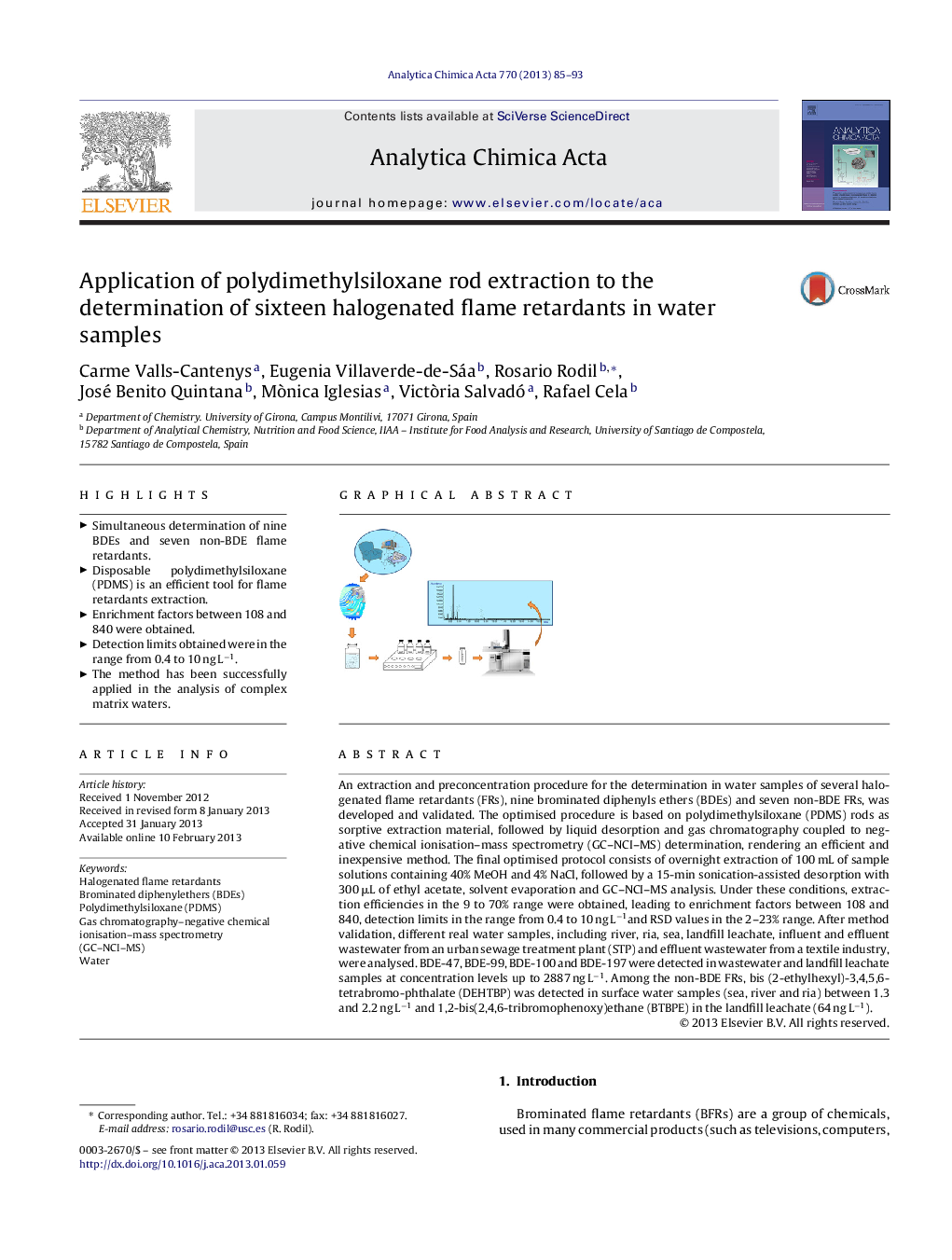| Article ID | Journal | Published Year | Pages | File Type |
|---|---|---|---|---|
| 1165441 | Analytica Chimica Acta | 2013 | 9 Pages |
An extraction and preconcentration procedure for the determination in water samples of several halogenated flame retardants (FRs), nine brominated diphenyls ethers (BDEs) and seven non-BDE FRs, was developed and validated. The optimised procedure is based on polydimethylsiloxane (PDMS) rods as sorptive extraction material, followed by liquid desorption and gas chromatography coupled to negative chemical ionisation–mass spectrometry (GC–NCI–MS) determination, rendering an efficient and inexpensive method. The final optimised protocol consists of overnight extraction of 100 mL of sample solutions containing 40% MeOH and 4% NaCl, followed by a 15-min sonication-assisted desorption with 300 μL of ethyl acetate, solvent evaporation and GC–NCI–MS analysis. Under these conditions, extraction efficiencies in the 9 to 70% range were obtained, leading to enrichment factors between 108 and 840, detection limits in the range from 0.4 to 10 ng L−1and RSD values in the 2–23% range. After method validation, different real water samples, including river, ria, sea, landfill leachate, influent and effluent wastewater from an urban sewage treatment plant (STP) and effluent wastewater from a textile industry, were analysed. BDE-47, BDE-99, BDE-100 and BDE-197 were detected in wastewater and landfill leachate samples at concentration levels up to 2887 ng L−1. Among the non-BDE FRs, bis (2-ethylhexyl)-3,4,5,6-tetrabromo-phthalate (DEHTBP) was detected in surface water samples (sea, river and ria) between 1.3 and 2.2 ng L−1 and 1,2-bis(2,4,6-tribromophenoxy)ethane (BTBPE) in the landfill leachate (64 ng L−1).
Graphical abstractFigure optionsDownload full-size imageDownload as PowerPoint slideHighlights► Simultaneous determination of nine BDEs and seven non-BDE flame retardants. ► Disposable polydimethylsiloxane (PDMS) is an efficient tool for flame retardants extraction. ► Enrichment factors between 108 and 840 were obtained. ► Detection limits obtained were in the range from 0.4 to 10 ng L−1. ► The method has been successfully applied in the analysis of complex matrix waters.
